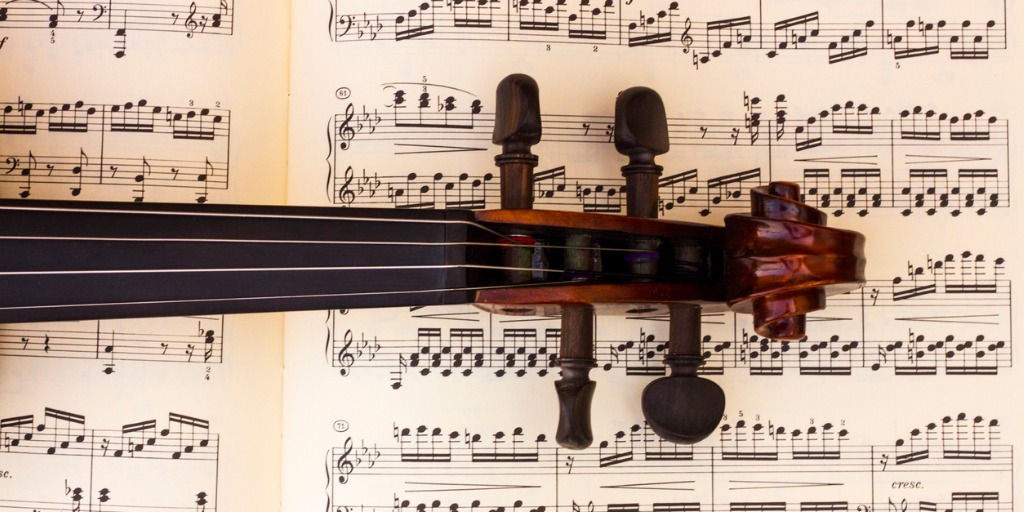| By J. Robert Parks |
Ludwig van Beethoven’s final Ninth Symphony is one of the most famous works of classical music. Its fourth movement in particular, which includes the stirring choral arrangement of Friedrich von Schiller’s “Ode to Joy,” has become a hallmark of movies, commercials, and even ringtones. The symphony was first performed two hundred years ago this week on May 7, 1824, in Vienna, Austria. Teachers and librarians hoping to provide a broader context for one of classical music’s greatest works will find plenty of material in Gale In Context: World History.
Beethoven was born in 1770 in Bonn, Germany. As a child, he was a promising keyboard player and talented composer. In 1792, he studied with Joseph Haydn in Vienna, the center of European music and culture at the time. When Beethoven explored taking a position in 1808 in Kassel (in modern-day central Germany), wealthy backers in Vienna promised Beethoven an annual salary, and he remained there for the rest of his life.
Beethoven started as a composer during what’s now described as the classical period. This isn’t because the music had anything to do with classical Greece or Rome but because it emphasized harmony, elegance, and balance, which were seen as classical virtues. Beethoven’s early works were influenced by Haydn and Wolfgang Amadeus Mozart, two titans of the classical period. As Beethoven’s career developed, however, he embraced the growing Romantic movement, which valued emotion and feelings more than classical ideas of order and elegance. This correlated with greater experimentation in music, including innovative ways in which different combinations of instruments could convey messages or affect emotions.
Beethoven had long wanted to use Schiller’s poem “Ode to Joy” in his compositions. Schiller was one of the most significant German writers of the eighteenth century, and his poem celebrates God, creation, and the connectedness of humanity. Despite unanticipated negative aftereffects of the French Revolution, Beethoven still embraced its ideals of liberty and fraternity, and the Ninth Symphony is an attempt to give those a musical voice.
The Ninth Symphony was written at a time when concert halls were becoming the predominant venues for listening to music, as opposed to the salons of the eighteenth and early nineteenth centuries. A larger hall allowed for a larger sound and orchestra. The Ninth Symphony, with its full orchestra, vocal soloists, and chorus, was perfectly suited to this new kind of venue.
At its premiere on May 7, 1824, however, not everyone in the audience appreciated it. Famously, the future opera composer Richard Wagner was in the audience and found the music baffling. Audiences weren’t used to such combinations of sounds, so it seemed overwhelming to those hearing it for the first time. Gale In Context: World History helps put such events in perspective by detailing how they were received by various observers and critics at the time.
It probably didn’t help that Beethoven conducted the premiere himself, despite being deaf. This isn’t quite as strange as it seems. In the early nineteenth century, conductors had less control in a performance, as Baroque and classical pieces had featured smaller orchestras where a conductor wasn’t as necessary to guide the ensemble. The development of larger orchestras and concert halls as well as more complicated music all led to the rise of conductors who exerted more power and imposed more discipline. That transition hadn’t taken place, however, by 1824.
Despite the initial reaction, the Ninth Symphony was eventually hailed as a masterpiece and has had an enormous impact, not just on music but on culture as well. Although the chorus sings of brotherhood and the music of the final movement has been adopted as the official anthem of the European Union, the symphony has also been embraced by nationalists of all stripes. Adolf Hitler had the symphony played at his birthday concerts, and it was the national anthem of Rhodesia, a country founded on colonial white supremacy. The lyrics have also been changed in some performances to reflect current sentiment. After the Berlin Wall fell in 1989, Leonard Bernstein conducted the Ninth Symphony in Berlin where he replaced the German word for “joy” with “freedom.” In more recent years, after Russia invaded Ukraine in 2022, the Ukrainian Freedom Orchestra toured Europe and elsewhere, and they translated “Ode to Joy” into Ukrainian as a call for Europe to stand with it. Of course, few students could understand the lyrics without a translation. Most can recognize the melody, however, no matter how musically inclined they are.
About the Author
J. Robert Parks is a former professor and frequent contributor to Gale In Context: U.S. History and Gale In Context: World History who enjoys thinking about how our understanding of history affects and reflects contemporary culture.




